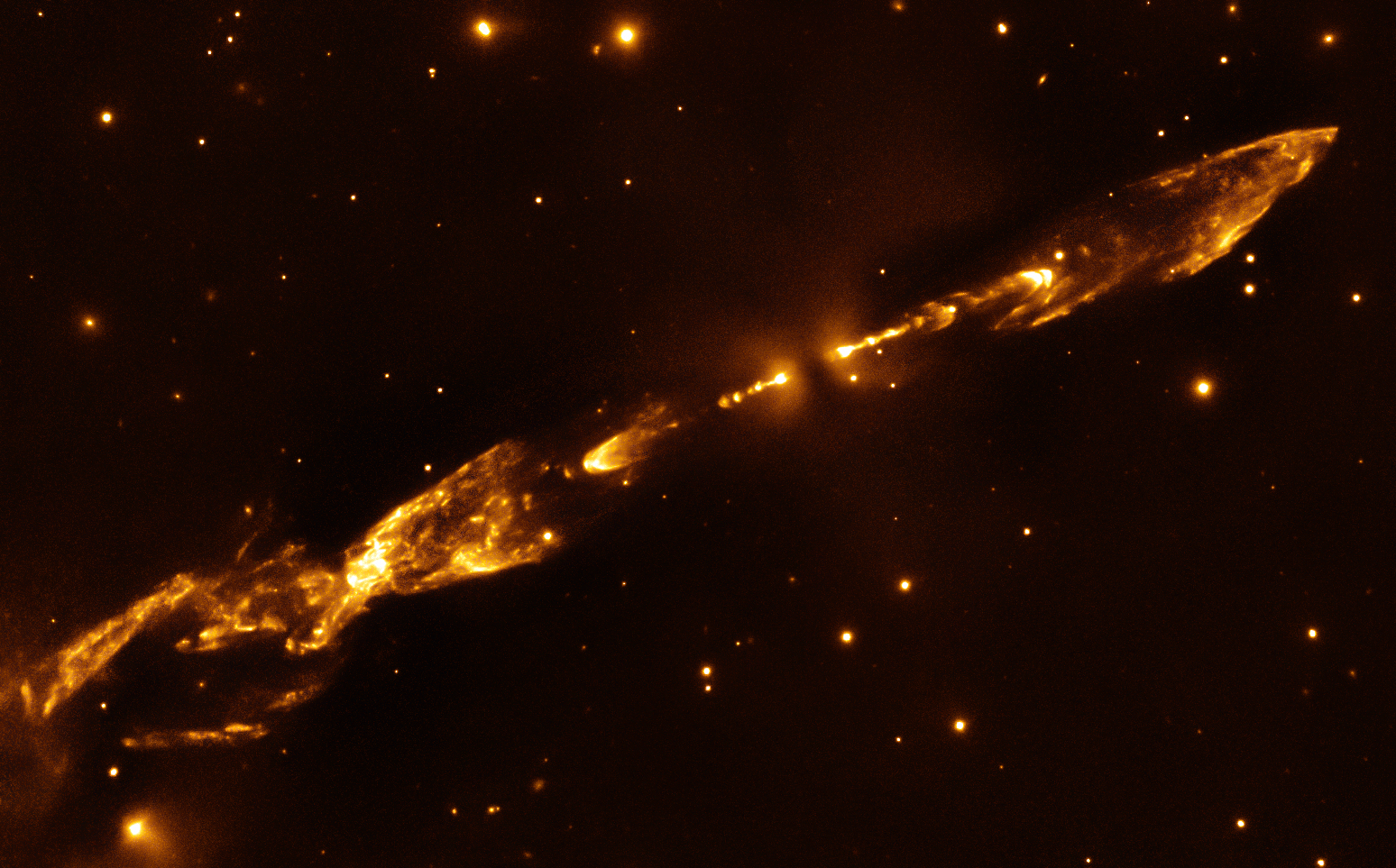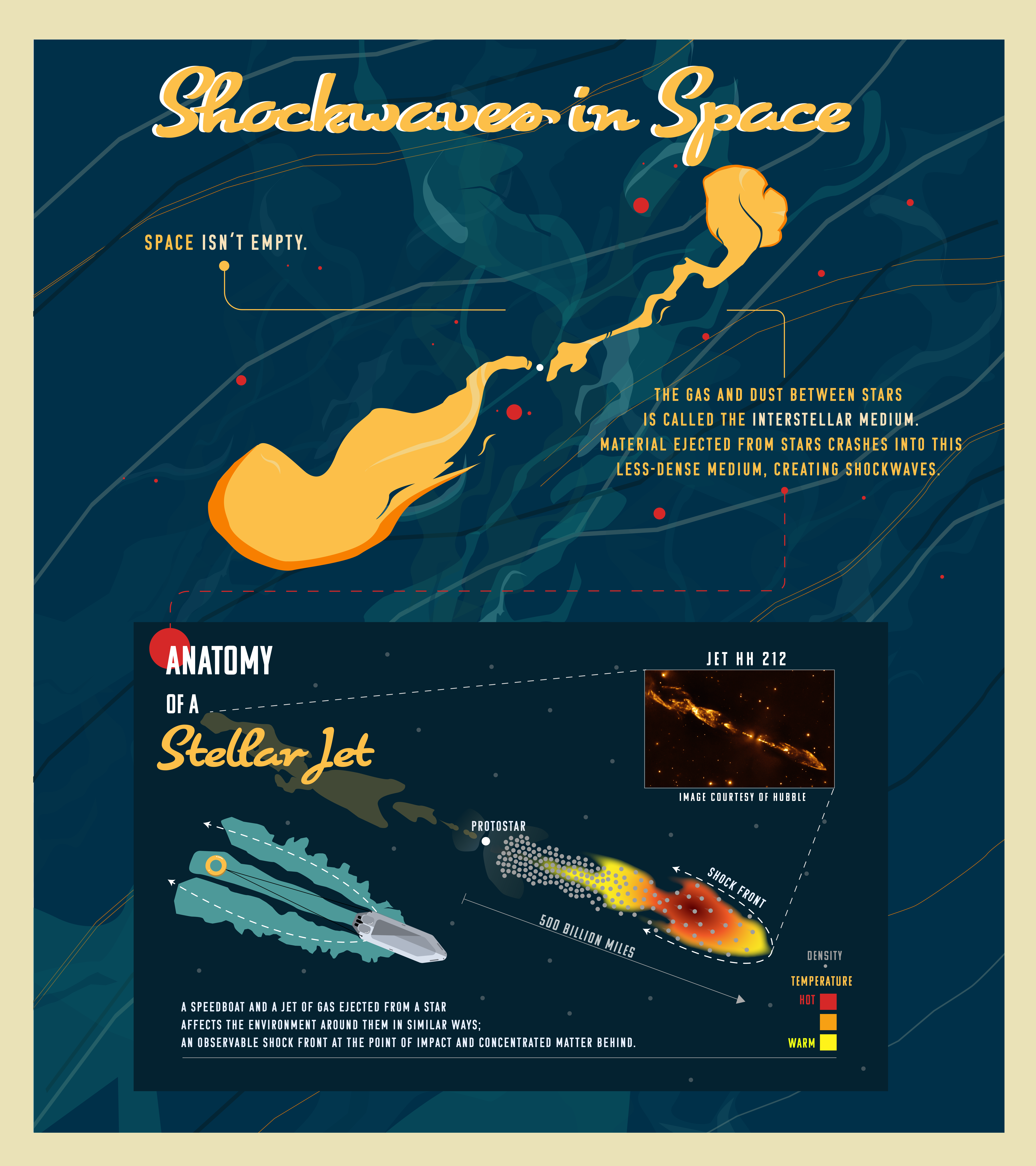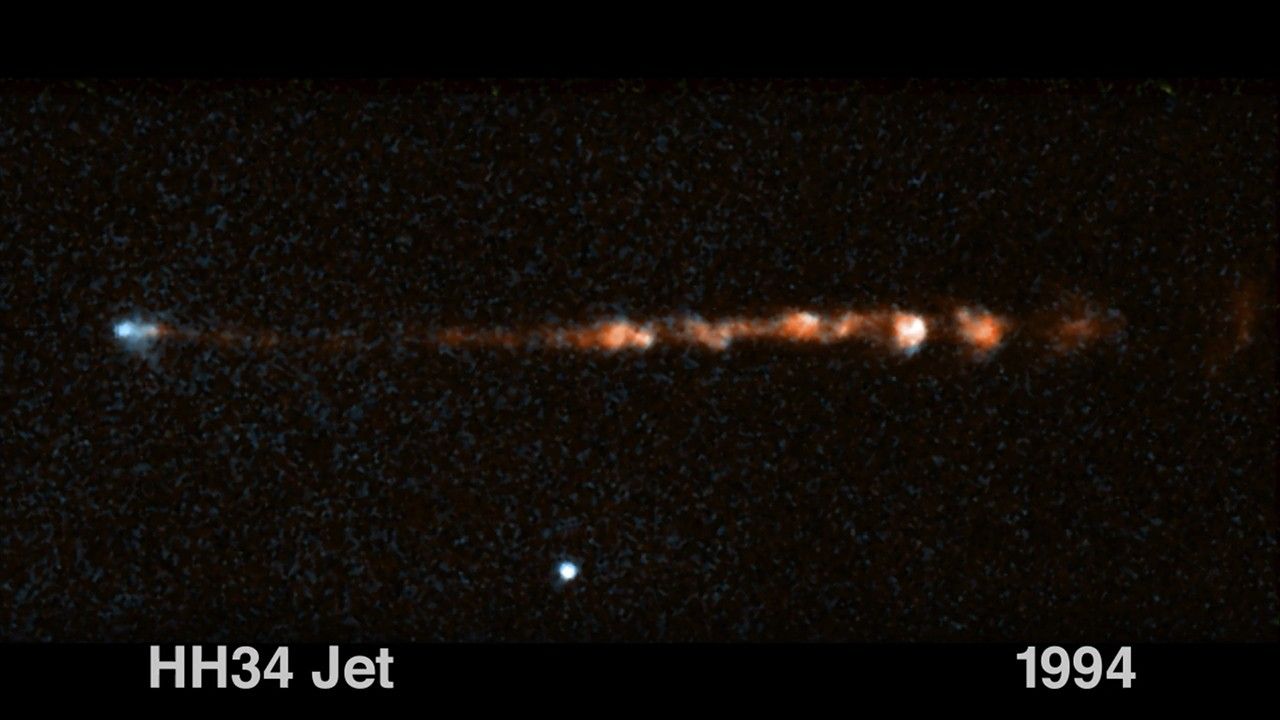1 min read
Herbig-Haro 212 (VLT)

A pair of jets protrude outwards in this infrared image of Herbig-Haro 212 (HH 212), taken by the European Southern Observatory’s Very Large Telescope. Webb’s high resolution and sensitivity will allow astronomers to examine objects like this in greater detail than ever before.
About the Object
- R.A. PositionR.A. PositionRight ascension – analogous to longitude – is one component of an object's position.5 43 50.64
- Dec. PositionDec. PositionDeclination – analogous to latitude – is one component of an object's position.-1° 3' 11.46"
- ConstellationConstellationOne of 88 recognized regions of the celestial sphere in which the object appears.Orion
- DistanceDistanceThe physical distance from Earth to the astronomical object. Distances within our solar system are usually measured in Astronomical Units (AU). Distances between stars are usually measured in light-years. Interstellar distances can also be measured in parsecs.1,400 light-years
About the Data
- Data DescriptionData DescriptionProposal: A description of the observations, their scientific justification, and the links to the data available in the science archive.
Science Team: The astronomers who planned the observations and analyzed the data. "PI" refers to the Principal Investigator.Field of view: 3.83 x 2.39 arcminutes. North is 90.2° right of vertical. - InstrumentInstrumentThe science instrument used to produce the data.ESO Infrared Spectrometer and Array Camera
- Object NameObject NameA name or catalog number that astronomers use to identify an astronomical object.Herbig-Haro 212
- Release DateNovember 14, 2018
- Science ReleaseNASA’s Webb Telescope Will Investigate Cosmic Jets from Young Stars
- CreditImage: ESO, Mark McCaughrean
Related Images & Videos
Share
Details
Last Updated
Aug 28, 2025
Contact
Media
Laura Betz
NASA’s Goddard Space Flight Center
Greenbelt, Maryland
laura.e.betz@nasa.gov
Image Credit
ESO, Mark McCaughrean

































